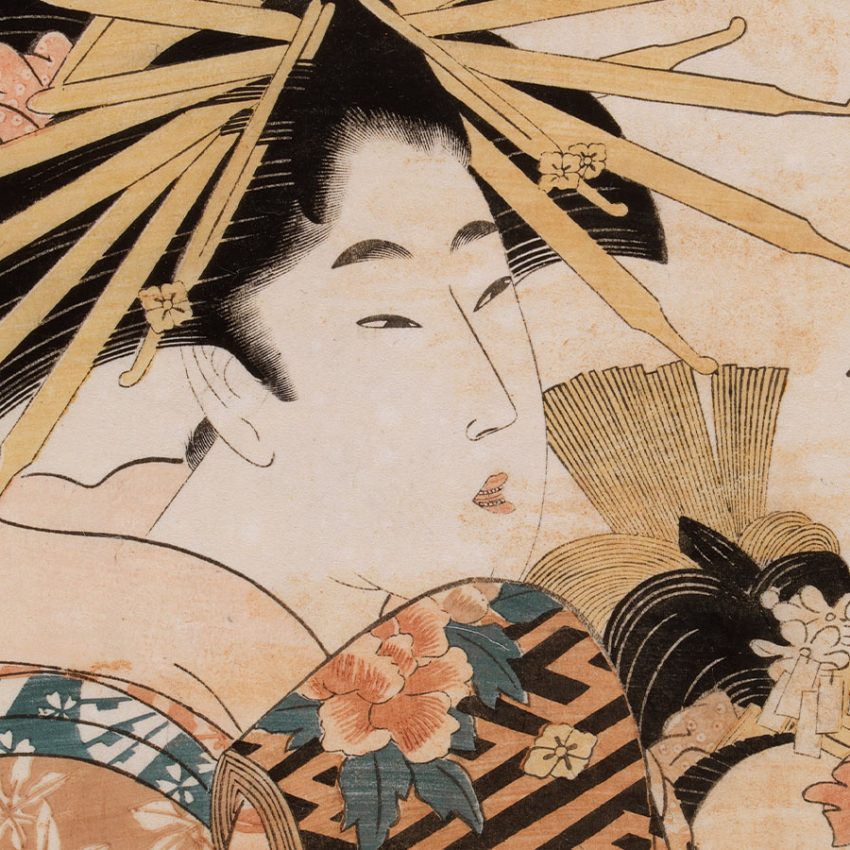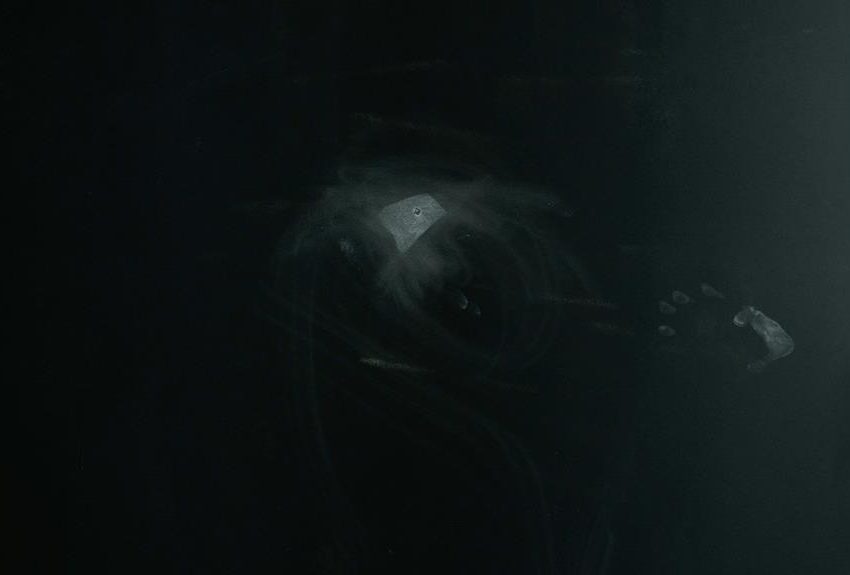Cave Art
PREHISTORIC CAVE PAINTINGS IN ART HISTORY
History of cave art: Origins and significance
The origins of cave art can be traced back tens of thousands of years, with the oldest known cave paintings found in caves across Europe and Asia. These ancient artworks provide valuable insights into the lives, beliefs, and artistic expressions of our ancestors. The significance of cave art lies not just in its aesthetic beauty but also in its role as a form of communication, storytelling, and perhaps even ritualistic practice for early humans.
The intricate details and skilled craftsmanship displayed in many cave paintings reveal a sophisticated understanding of artistic techniques even at a time when written language did not exist. Additionally, the choice of subject matter – ranging from animals to human figures to abstract symbols – suggests a complex symbolic language that these prehistoric artists used to express their experiences and worldviews. As we continue to unravel the mysteries of cave art through archaeological research and analysis, we come closer to understanding the rich cultural heritage left behind by our ancient predecessors.
Techniques used in cave art: Tools and materials
Cave art, with its mesmerizing depictions of prehistoric life, offers a window into the ancient world. The techniques used by early humans to create these masterpieces were as ingenious as they were primal. Tools such as charcoal sticks, fingers, bones, and brushes made from natural materials like animal hair or moss were utilized to transfer images onto cave walls.
In addition to tools, the choice of materials was crucial in creating lasting cave art. Pigments were sourced from natural elements like minerals and plants, mixed with saliva or animal fat to form paint. These artists ingeniously used their surroundings to bring vivid colors and detailed imagery to life on dark cave surfaces where light was scarce but creativity abundant. The combination of innovative tools and resourceful materials showcases the creativity and ingenuity of our ancient ancestors in preserving their stories for future generations through breathtaking cave artworks.
Cave Stones and Cave Drawings
Cave stones and cave drawings are both integral components of prehistoric art, offering valuable insights into early human societies and their interactions with animals in rock art. Cave stones, typically used as canvases for artistic expression, provide evidence of human creativity and symbolic communication. These stones often bear engravings or carvings depicting animals, humans, or abstract symbols, serving as a medium for storytelling or ritualistic purposes.
Cave drawings, on the other hand, are representations of images or scenes painted or drawn onto the walls of caves, showcasing the work of ancient cave painters. These drawings, found in caves worldwide, showcase the artistic skills and cultural beliefs of ancient civilizations. Often depicting animals, humans, or geometric patterns, cave drawings offer glimpses into the daily lives, spiritual practices, and mythologies of prehistoric peoples.
Together, cave stones and cave drawings constitute a rich tapestry of prehistoric art, providing windows into the minds and cultures of early humans. Studying these artifacts allows researchers to unravel the mysteries of our ancient ancestors and gain a deeper understanding of the origins of human creativity and expression.
Jean Clottes on Stump Drawing
Jean Clottes, a renowned archaeologist specializing in prehistoric art, has extensively studied the Stump Drawing, a significant Paleolithic artwork found in France’s Tuc d’Audoubert cave. Clottes’ analysis sheds light on its importance and symbolic meanings within Paleolithic art. The Stump Drawing, a life-sized bison representation carved into the cave’s clay floor, offers insights into the artistic techniques and cultural context of prehistoric peoples. Clottes suggests the drawing may have had ritualistic or symbolic significance, contributing to our understanding of Paleolithic communities’ social and spiritual lives.
Art History : Palaeolithic Cave Art
The cave of Altamira in Spain stands as the first recognized Paleolithic site, dating back to the Stone Age. Art found within its depths was attributed to Homo sapiens, indicating the creativity of early modern humans and marking a significant period in prehistory. While the majority of cave art discoveries originate from France and Spain, scattered examples also exist in Portugal, England, Italy, Romania, Germany, Russia, and Indonesia. Currently, approximately 400 decorated sites have been identified worldwide.
Prehistoric Art
Prehistoric art encompasses a vast array of artistic expressions created by early human societies before the advent of written records. Spanning thousands of years and found across continents, prehistoric art provides invaluable insights into the lives, beliefs, and cultures of our ancient ancestors.
One of the most well-known forms of prehistoric art is cave painting, found in caves and rock shelters around the world. These paintings depict animals, humans, symbols, and scenes from daily life, offering glimpses into the artistic abilities and spiritual practices of early humans. Famous examples include the Lascaux Cave paintings in France and the Altamira Cave paintings in Spain.
In addition to cave paintings, prehistoric art includes sculptures, engravings, and carvings. Stone sculptures, such as the Venus figurines found across Europe, are believed to have had ritualistic or symbolic significance. Petroglyphs and petrographs, carved or pecked into rock surfaces, can be found in various locations, providing further evidence of early artistic expression.
Portable art, such as engraved bone or ivory pieces, also represents an important aspect of prehistoric art.
These small objects often depict animals, humans, or abstract designs and were likely used for personal adornment or ceremonial purposes, echoing the artistic legacy of cave painters.
Prehistoric art reflects the cultural diversity and creativity of ancient societies, showcasing their ability to communicate, express themselves, and interact with their environment.
By studying prehistoric art, archaeologists and historians gain valuable insights into the origins of human creativity, symbolism, and cultural practices, enriching our understanding of the human experience throughout history.
Oldest Cave Paintings and The Ice Age
The oldest cave paintings, dating back tens of thousands of years, offer a glimpse into life during the Ice Age and are key artifacts in understanding prehistory. These artworks, found in caves across continents, depict animals, humans, and symbols. Created by early humans using natural pigments, such as charcoal and ochre, these paintings showcase the artistic and cultural sophistication of ancient societies. Studying them provides insights into how early humans adapted to and thrived in challenging environments, offering valuable clues about their beliefs, practices, and survival strategies during this frigid period.
During this period, known as the Upper Paleolithic era, humans faced harsh and challenging environments as they contended with fluctuating climates, harsh winters, and scarce resources. Despite these adversities, early humans demonstrated remarkable resilience and adaptability, developing sophisticated techniques for hunting, gathering, and survival.
In the darkness of caves, illuminated only by flickering torchlight, early humans found a canvas upon which to express themselves. Using natural pigments sourced from minerals such as ochre, charcoal, and manganese oxide, they painted intricate scenes of animals, humans, and abstract symbols onto the cave walls. These paintings, meticulously crafted with fine detail and precision, provide vivid snapshots of life during this prehistoric era and are prime examples of how paintings were made to endure over millennia.
Influence
Formal and thematic elements akin to cave art are evident in various modern and contemporary art movements, spanning from Cubism to Abstract Expressionism and Art Brut. Picasso often depicted bulls and other animals using lines and shapes reminiscent of Altamira’s primal forms. Jackson Pollock paid homage to ancient cave artists by incorporating handprints into the top edge of at least two of his paintings. Jean Dubuffet endeavored to capture the most instinctive and unschooled creative expressions in his work, evoking the artistry of early human societies.
Themes depicted in cave art: Animals and symbols
Paintings of Animal and Human Subjects
Humans are not the sole focus of ancient cave art, as evidenced by discoveries on nearly every continent, excluding Antarctica.
The Pyrenees region alone has yielded at least 350 cave art sites in Europe. Recent findings in Borneo (2018) and Croatia (April 2019) have further expanded our understanding of prehistoric art.
Remarkably, despite the vast distances between these sites, they share strikingly similar motifs.
Handprints or stencils of human hands, abstract designs featuring dots and crosshatched lines, and depictions of large animals—both carnivores and herbivores, many now extinct—are common elements found in these caves.
Animals and symbols are pervasive themes in cave art that provide a window into the beliefs and cultural practices of early humans.
The intricate depictions of animals such as bison, horses, and mammoths suggest a deep connection with the natural world and may have served as both hunting aids and tools for spiritual communication.
Additionally, symbolic representations like handprints, geometric shapes, and abstract patterns hint at a sophisticated understanding of symbolic language and possibly an early form of written communication.
However, not all motifs are present in every cave. Some sites feature only handprints or representations of megafauna, while others showcase a combination of elements.
This diversity underscores the complexity and richness of ancient artistic traditions, offering tantalizing glimpses into the diverse cultures and environments of prehistoric peoples.
The presence of these themes suggests that cave art was not merely decorative but held significant meaning for ancient societies.
By studying these images, researchers can unravel the complex relationships between humans, animals, symbols, and spirituality in prehistoric times. Moreover, the consistent use of certain motifs across different regions points to a shared cultural heritage among ancient civilizations and highlights the universal human impulse to express ideas through art.
Locations of famous cave art sites worldwide
Drakensberg Rock Art Site in South Africa and Blombos Cave
Blombos Cave, located in South Africa, and the Drakensberg rock art site in the Drakensberg Mountains are both significant archaeological sites rich in ancient history. Blombos Cave has yielded some of the earliest evidence of human creativity, including engraved ochre and shell beads dating back over 70,000 years, highlighting the dawn of artistic expression in prehistory. These findings provide insight into early symbolic behavior and cognitive development.
On the other hand, the Drakensberg rock art site is renowned for its extensive collection of San rock paintings, which depict hunting scenes, spiritual rituals, and everyday life of the indigenous San people. These paintings, created over thousands of years, offer a glimpse into the cultural practices and beliefs of the San, contributing to our understanding of Southern Africa’s rich cultural heritage.
Both sites are crucial for understanding the evolution of human behavior and artistic expression, highlighting the importance of preserving our shared human history for future generations, especially significant cave in France with Bronze Age art.
Chauvet Cave
Chauvet Cave, dubbed the “cave of forgotten dreams,” is an archaeological treasure in southern France. Discovered in 1994, it boasts some of the world’s oldest Paleolithic cave paintings, dating over 30,000 years. The cave’s well-preserved artwork depicts large animals with exquisite detail, offering insights into ancient culture. Designated a UNESCO World Heritage Site, access is limited to protect its fragile environment, including the preservation of painted on cave walls. Despite restrictions, Chauvet Cave remains a captivating testament to our ancient past.
Cueva de las Manos
Cueva de las Manos, or Cave of Hands, in Argentina, boasts ancient rock art dating back thousands of years. Named for its vivid hand stencils adorning its walls, this site provides insights into the artistic and cultural practices of early human societies. Recognized as a UNESCO World Heritage Site, its preservation is essential for understanding our shared human heritage.
Lascaux cave
The Lascaux Cave, situated in southwestern France, is renowned for its exceptional Paleolithic cave paintings, dating back over 17,000 years. The Lascaux paintings depict a variety of animals, including horses, deer, and bulls, rendered with remarkable detail and sophistication. Discovered in 1940, the cave’s artistry offers invaluable insights into the prehistoric world and the creative abilities of early humans. Despite its closure to the public to preserve its delicate ecosystem, Lascaux remains a symbol of humanity’s ancient artistic heritage.
Altamira cave
Among the pioneers in the study of cave art was Marcelino Sanz de Sautuola, whose discovery of the cave of Altamira revolutionized our understanding of prehistoric art. Sautuola’s recognition of the artistic significance of the cave paintings challenged prevailing notions of the intellectual capabilities of early humans and sparked widespread interest in the field of art research.
Apollo 11 Cave
The Apollo 11 Cave, nestled in Namibia’s Huns Mountains, houses ancient rock art dating over 25,000 years. These paintings, among Africa’s oldest, depict animals, humans, and geometric patterns, offering insights into the ancient San people’s culture. The cave’s archaeological significance is underscored by discoveries of stone tools and pottery fragments. Recognized as a national monument and part of UNESCO’s Twyfelfontein World Heritage Site, it serves as a vital cultural and historical treasure, warranting preservation for future generations.
Maros-Pangkep Caves & Leang Tedongnge Cave
The Maros-Pangkep Caves and Leang Tedongnge Cave, both located on the Indonesian island of Sulawesi, are renowned for their ancient cave art. These caves house some of the oldest known examples of prehistoric rock art, dating back over 45,000 years. The imagery found within these caves offers valuable insights into the cultural and artistic practices of early human societies, depicting animals, human figures, and abstract symbols. As significant archaeological sites, they provide evidence of ancient Sulawesi’s technological advancements and cultural traditions. Recognized for their global importance, both caves have been designated as UNESCO World Heritage Sites, underscoring the need for their preservation and protection for future generations.
Niaux Cave
Niaux Cave, nestled in the French Pyrenees, is a notable archaeological site known for its Paleolithic cave paintings. These ancient artworks, estimated to be over 14,000 years old, provide valuable insights into the artistic and cultural practices of prehistoric humans, including the depiction of large animals on cave walls. The cave’s paintings depict a variety of subjects, including animals, humans, and abstract symbols, showcasing the creativity and ingenuity of our ancient ancestors. Niaux Cave stands as a testament to the rich cultural heritage of the region and the enduring legacy of Paleolithic artistry.
Kakadu National Park
Moving across continents to Australia, we encounter the fascinating Indigenous rock art at Kakadu National Park. With depictions dating back thousands of years, this site showcases intricate paintings that not only depict daily life but also provide insights into cultural practices and spiritual beliefs of ancient inhabitants. The vivid colors and unique styles used in this cave art offer a deeper understanding of the rich history ingrained in the rocky landscapes Down Under.
Lubang Jeriji Saléh
In November 2018, scientists made a groundbreaking discovery in the cave of Lubang Jeriji Saléh on Borneo. They uncovered the oldest known figurative art painting, estimated to be over 40,000 years old, possibly even older. The painting depicts an unidentified animal and showcases remarkable artistic skill, shedding light on the creativity of early humans. This finding challenges previous assumptions about the origins of prehistoric art and emphasizes the importance of Southeast Asia in human cultural development.
Cave of Swimmers
Located in the mountainous Gilf Kebir region of the Sahara Desert, southwest Egypt, near the Libyan border, are the Cave of Swimmers and the Cave of Beasts. Discovered in October 1933 by Hungarian explorer László Almásy, the Cave of Swimmers is adorned with rock paintings depicting people swimming. These images, estimated to be around 10,000 years old, date back to the most recent Ice Age.
Preservation efforts and challenges facing cave art
Preserving ancient cave art is a delicate and complex task that requires a balance between conservation efforts and public access.
The biggest challenge faced by preservationists is the threat of deterioration due to environmental factors such as humidity, temperature fluctuations, and microbial growth.
Modern technology like 3D scanning and digital mapping have revolutionized how we document and monitor these fragile artworks.
However, preserving cave art also involves navigating ethical dilemmas surrounding tourism impact. Increased foot traffic can introduce pollutants, leading to irreversible damage to painted cave walls.
Striking a balance between sharing these treasures with the world while ensuring their longevity remains an ongoing challenge for those invested in safeguarding our cultural heritage.
Efforts to educate the public on responsible visitation are crucial to ensure that future generations have the opportunity to marvel at these historic creations firsthand.
Influence of cave art on modern culture
The enigmatic beauty of ancient cave art continues to captivate and influence modern culture in profound ways. The simple yet powerful expressions found on the walls of these deep, dark caves offer a glimpse into the minds of our ancestors, sparking inspiration and creativity among artists today.
Many contemporary artists draw upon the primal energy and raw emotion conveyed through cave paintings, infusing their own work with a sense of timelessness and connection to our shared human history.
Moreover, the motifs and symbols discovered in cave art have permeated various aspects of modern culture, from fashion design to interior decor.
The intricate patterns and geometric shapes found in prehistoric rock art have been reimagined and reinvented in countless ways, inspiring new trends that echo the enduring appeal of primitive expression.
It is fascinating to observe how these ancient images continue to resonate with us on a visceral level, transcending time and space to leave an indelible mark on our cultural landscape.
Conclusion: The enduring legacy of cave art
In conclusion, the exploration of Paleolithic art and prehistoric cave paintings unveils a captivating narrative of humanity’s earliest artistic endeavors. Decorated caves, adorned with rock paintings and ancient artistry, serve as windows into the past, revealing the figural expressions of our ancient ancestors. From the renowned Cave of Altamira to the mystical Cave of Forgotten Dreams, these sites offer glimpses into the rich tapestry of ancient art traditions, depicting animals, human hands, and large creatures on cave walls across continents.
As we delve deeper into the oldest known cave art, such as the Paleolithic cave paintings found in the caves of Western Europe and the Leang Tedongnge Cave in Sulawesi, Indonesia, we uncover the origins of artistic expression and the enduring legacy of early cave artists. The discovery of prehistoric rock art sites, including Niaux Cave and Apollo 11 Cave, further underscores the significance of these ancient artworks as UNESCO World Heritage Sites, preserving our oldest art traditions for future generations.
Moreover, the role of the art gallery and the art historian is paramount in preserving and interpreting these ancient treasures. Art galleries provide a platform for the public to engage with and appreciate the beauty and significance of cave art, while art historians offer insights into the cultural contexts and artistic techniques employed by ancient cave artists. Through ongoing research and interpretation, art historians shed light on the mysteries of cave art, enriching our understanding of human creativity and cultural evolution.
As we navigate the realms of art history and contemporary art, the influence of cave art resonates in the modern interpretations of ancient motifs, bridging the gap between past and present in a timeless exploration of human creativity. Through ongoing art research and exploration, we continue to unravel the mysteries of cave art, celebrating the oldest known form of artistic expression and honoring the legacy of our ancient cave artists.
As we reflect on the enduring legacy of cave art, it becomes clear that these ancient works offer us a unique glimpse into the minds and experiences of our distant ancestors. Beyond their aesthetic value, these paintings and engravings convey a deep sense of connection to the natural world and a profound reverence for the mysteries of life, as seen in african rock art. Through their depictions of animals, hunting scenes, and rituals, cave artists sought to communicate not just their daily realities but also their spiritual beliefs and cultural values.
What makes cave art truly remarkable is its ability to transcend time and speak to universal themes that continue to resonate with us today. The intricate details and symbolic meanings woven into every stroke reveal an innate human desire for expression, storytelling, and connection with something larger than ourselves. As we study these ancient artworks, we are reminded of our shared humanity across different epochs and cultures, inspiring us to appreciate both the diversity of human experience and the unifying power of artistic creation.





